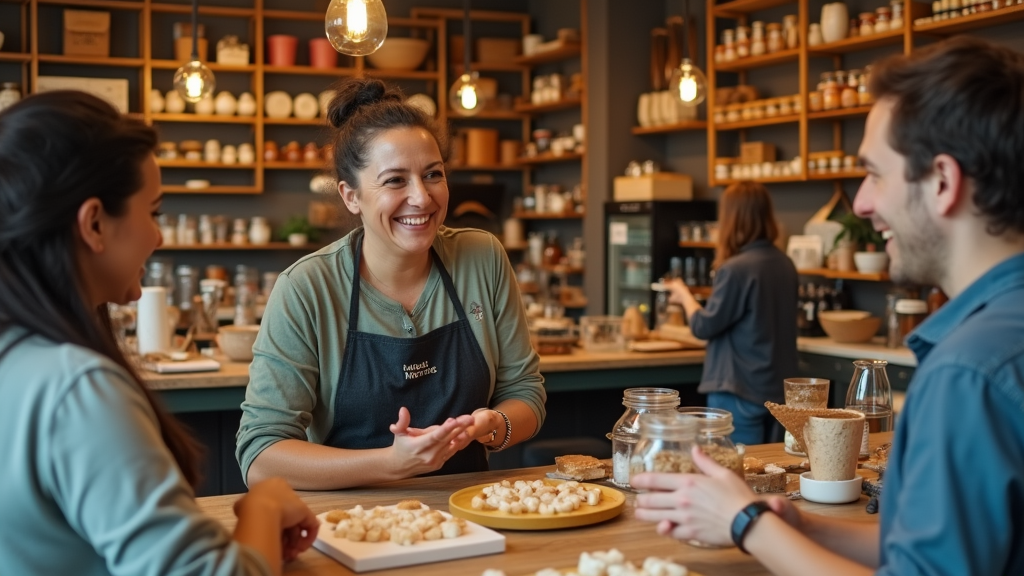How Small Businesses Are Reinventing Brick-and-Mortar Magic
Discovering the Magic of Brick-and-Mortar Stores for Small Businesses
As small business owners continue to rediscover the charm and benefits of brick-and-mortar stores, a noteworthy trend is emerging. While Geauga County Maple Leaf is not specifically covered, the global phenomenon of brick-and-mortar resurgence offers an exciting context for local applications. Small businesses are beginning to reimagine the magic of offline space, finding unique ways to engage customers and revitalize the local economy. The physical shopping experience is making a notable comeback as it offers tangible benefits that online platforms cannot replicate. This resurgence is driven by factors such as in-person experiences, community engagement, and technological integration, which are key strategies that small businesses can leverage to thrive in this renewed landscape.
The Sensory Shopping Experience
One of the most appealing aspects of physical stores is the sensory experience they offer, enabling customers to touch, feel, or try out products before making a purchase. For instance, cosmetic stores have introduced interactive mirrors with augmented reality features, allowing customers to experiment with different looks right in the store. Additionally, pop-up zones for workshops or mini lectures, like baking classes in a local bakery, transform a shopping trip into a memorable event. This tactile interaction provides a nuanced appreciation of products, fostering a deeper customer connection that online shopping cannot match.
Localism and Emotional Connection
Research indicates that a significant portion of money spent at local businesses remains within the community, thereby boosting the local economy. Small shops focus on artisanal products and collaborate with local producers, crafting a compelling “story behind the product.” An example could involve a boutique in Geauga County using QR codes on labels to tell stories about the craftsmen from the area. Such initiatives foster a strong emotional connection between the business and its customers, enhancing loyalty and community support.
The Hybrid Model: Online to Offline
Integrating online and offline modalities has become a crucial strategy for small businesses. Customers appreciate the convenience of ordering online and picking up their purchases in-store, which reduces delivery costs and encourages impulse purchases. Technologies like Teamwork Commerce allow patrons to reserve products via an app and collect them at their convenience, bridging the gap between digital and physical retail spaces. This seamless integration not only streamlines shopping experiences but also fortifies customer relationships by providing multiple touchpoints for engagement.
Personalization Through Data
Even small enterprises are leveraging simple Customer Relationship Management (CRM) systems to analyze purchasing patterns, enabling targeted offers such as complimentary birthday desserts at coffee shops. Social media integration plays a pivotal role here; photo booths with branded hashtags generate User-Generated Content (UGC), enhancing online visibility and customer interaction. Such personalized experiences differentiate small businesses in a crowded marketplace, creating lasting impressions and fostering customer loyalty.
Adaptive Store Spaces
Adapting physical spaces to serve multiple purposes can greatly enhance business flexibility. Transformative storefronts might offer coffee and pastries during the day and become mini lecture halls in the evening. Businesses can also engage in partnership collaborations, sharing space between a flower shop and a candle-making studio for seasonal events. This adaptability not only maximizes space utilization but also attracts diverse customer demographics, enriching the overall shopping experience.
SEO Optimization and Branding
Incorporating SEO keywords naturally within your content is key to enhancing online visibility. Keywords such as “local business,” “unique products [region name],” “store with a story,” and “artisanal design [product category]” should be seamlessly integrated into your marketing materials. Telling a product story through content that includes geotags can significantly boost searchability, fostering greater digital presence and driving more foot traffic to your brick-and-mortar location. Moreover, content such as “the story of one product” engages audiences and enhances brand storytelling.
Ultimately, for towns like Geauga County, this means highlighting authenticity where staff members know customers by name, and the product selection reflects local culture and values. As ICS points out, personalization becomes a crucial differentiator in competing against retail giants. With these strategies in place, small businesses can effectively harness the potential of brick-and-mortar stores, building a vibrant and resilient community presence.
Through strategic innovation and a commitment to customer engagement, small businesses can turn the tide of retail by embracing the enduring appeal of physical storefronts. The integration of personalized customer experiences, sensory engagement, localized offerings, and hybrid models ensures that brick-and-mortar stores remain a valuable asset in the modern economy.
latest video
news via inbox
Subscribe to the latest news in the world of politics and technology







